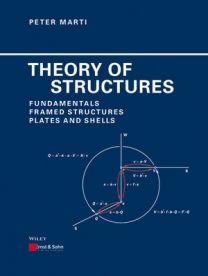Steel Construction 2/2014
"Theory of Structures" is an excellent textbook. It is very rich in the individual topics covered. One special and importend feature that should be mentioned ist the many excellently prepared examples and exercises.
... this is a wonderful textbook for undergraduate and graduate courses.
In addition, it could be of immense value to those practicing engineers who wish to deepen their background knowledge or refresh fundamental issues.
Ekkehard Ramm, University Stuttgart
Prof. Leroy Gardner
This textbook provides a comprehensive and authoritative treatment of the theory of structures. The scope of the book is very broad, ranging from the fundamentals of equilibrium, kinematics and constitutive models, through methods of linear structural analysis to more advanced topics relating to the geometrically and materially nonlinear behaviour of structures. The book is well written, well illustrated, logically ordered and clearly draws upon the teaching experience of the author. At the end of each chapter, a summary and a series of exercises are given to reinforce the important points. Finally, practical illustrations and numerous worked examples are provided throughout the book, and these help to the support the understanding of the key concepts. Overall, this substantial textbook on the theory of structures will serve as a very usual learning and reference resource for students, lecturers and practising engineers.
Prof. Leroy Gardner, Faculty of Engineering, Department of Civil and Environmental Engineering, Imperial College, London.
Recommendations
- de Borst, René / Crisfield, Mike A. / Remmers, Joris J. C. / Verhoosel, Clemens V.
Nichtlineare Finite-Elemente-Analyse von Festkörpern und Strukturen
October 2014- 587 pages
- Softcover
- German
ISBN: 978-3-527-33660-9out of print - more



